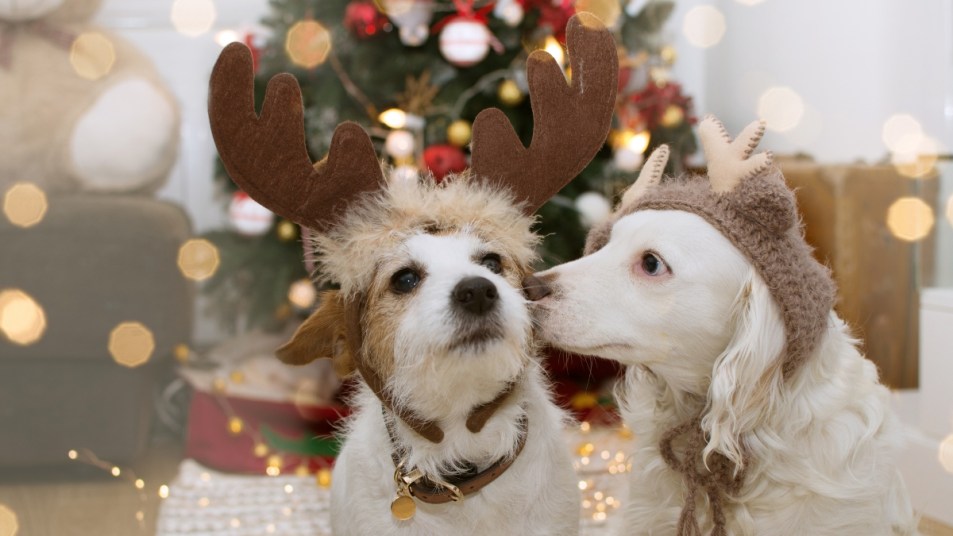Bringing Your Pet to a Holiday Gathering? Here’s How To Make It Go Smoothly

Every year, my family and I struggle with the same dilemma: Should we bring our dog to the holiday gathering, or hire a pet sitter? Our Samoyed, Eva, loves to meet new furry friends. But those meet-and-greets sometimes turn into barking and chasing fiascos! We can never predict exactly how she’ll react to new dogs and whether we’ll have to babysit her all day. So, what’s the fix? To figure out how to introduce dogs the right way, I reached out to the experts.
How to Introduce Dogs: Meet on Neutral Ground
According to Ali Smith, professional trainer and founder of the training service Rebarkable, having dogs meet on neutral ground is a must. “Neutral ground is ground on which neither dog spends all their time,” Smith says. “So not their home, ideally!” However, you don’t have to go very far to get outside of one dog’s territory. “The street right outside [the home] might be just the perfect place,” she adds.
Sally Seiver, founder of Surrey Dog Listeners (a training service specializing in dog and puppy behavior and obedience), agrees that introductions should take place on neutral ground. She suggests that dogs meet at a park, if one is available. “Arrange to meet the owner of the other dog in a park where neither dog has been before,” she says.
If there aren’t any nearby parks, a walk works as well. “I’d say go for a walk first,” says Smith. “Get everyone moving with a purpose. This takes out the initial friction that a dog might feel when meeting another dog.”
Handling the Introduction
Once you’ve arranged to meet at a park or on a walk, there are a few things to keep in mind. First, Seiver says to avoid face-to-face introductions.
“Do not initiate the introduction with a face-to-face encounter as this can be confrontational for the dogs,” she says. “Meet by walking several feet apart in the same direction and slowly coming together to be parallel to each other. Ensure there is no tension on the leash and continue to hold a conversation whilst maintaining relaxed body postures.”
Also, is it better for dogs to meet on or off leashes? Both experts seem to agree that on-leash is best for the very first encounter, when the dogs are walking in parallel. “When all are relaxed, that’s when a greeting can happen, preferably off leash,” says Smith. “But if that can’t happen, you can still make it work. And be ready with lots of treats!”
How to Know if It’s Going Well
Dogs will let you know whether they’re comfortable with one another – you just have to know the signs. “Dogs naturally greet on a curve,” says Smith. “They’ll arch around one another to get to the non-bite-y end if they’re being inoffensive. A straight, direct path is often a bad sign.”
Smith adds that “soft, floppy, bouncy body language” is another good sign, as is respecting each other’s space. To better understand your dog’s body language before the meet and greet, Smith suggests picking up a copy of Doggie Language by Lili Chin (Buy from Amazon, $11.99).
What should you do if that first encounter doesn’t go well? “If one or both of the dogs tense up, move away and make another attempt once both dogs are calm,” says Seiver. It could take some patience, but it will be worth it when both pups are at peace.
One last bit of advice — take another walk before you go inside. “Before allowing the guest dog to enter the host’s house, make sure that the dogs are walked in tandem again in the neighborhood before entering the host’s home,” Seiver says. “This form of introduction should ensure happy holidays for all.”













